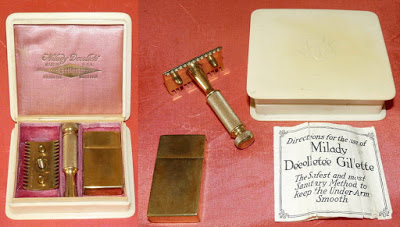
Imagine the classic Mona Lisa with a beard. Imagine Victoria’s Secret Angels walking down the ramp with their iconic lingerie and hairy legs. Imagine while Miss Universe 2018 Catriona Gray bounce in slow motion twirl on a swimsuit, a few stray pubes appear? It would be very peculiar, right? These women could have received tons of negative comments had they didn’t abide in whatever body rules we have for body hairs nowadays.
Hair removal and grooming for women for aesthetic enhancement have a long history.
The human body was not covered with almost 5,000,000 hair follicles for nothing. While body hair seems useless, it serves a useful purpose.
Every time you get goosebumps on a cold, snowy day, hairs on your arms regulate your body temperature, keeping you warm. Nose hairs called cilia helps prevent potential allergens like dust and pollen from entering the nostrils. In the same manner, eyelashes protect our eyes from debris, dirt, and other small particles. Eyelashes are sensitive to touch; thus, we blink as we sense an object approaching the eyes. Body hairs not only protect us from dirt, but it also facilitates sweating that cools our bodies on a hot summer season.
If body hairs are natural and helpful, why then women spend so much time removing them? It’s all for the sake of beauty, of course.
The practice of shaving female body hair is not a new fad. There were references of the practice back to ancient Rome and Egypt.
Long before we have shaving creams and Brazilian waxes, copper-made razors were used in Egypt and India as early as 6000 BC. Egyptian women removed their head hair and considered pubic hair uncivilized. Egyptians of Cleopatra’s time used sugar mixture to remove body hairs in a method similar to waxing. In the sixth century BC, upper-class Roman women used tweezers, pumice stones, and depilatories to achieve their desired degree of hairlessness. Elizabethan women shaved their eyebrows and hair from their foreheads to grow longer brows. (click here for more details)
Charles Darwin’s book, Descent of Man (1871), may have encouraged the modern era of hair removal. His book popularized natural selection theory, stating that humans have less body hair than antecedents because less hairy mates are more sexually attractive. Body hair became a criterion of competitive selection.
For the upper and middle class white American women of the 1900s, having smooth, silky skin is associated with desirable femininity.
Hair removal was encouraged through the efforts of the women’s fashion industry, the men’s hair removal industry, and the women’s magazine industry. Each of these industries recognized and sought profit from women as primary consumers.
Women’s fashion evolved accordingly. First, shorter hemlines threatened to reveal the hairy legs. Then, sleeveless garments bared arms. Exposed limbs in the changing fashion trends of the early 1900s pressured women to expose shaved armpits and legs.
The sophisticated, elegant, and provocative Harper’s Bazaar was the first women’s magazine to run hair removal advertisements in 1914. As the trend to expose the arms and legs continue, Gillette created the Milady Decollete, the first safety razor made specifically for women. Gillette launched an anti-underarm hair campaign in 1915, urging women to remove “unsightly” and “objectionable” hair from their underarms. (click here for more details)
World War II in the 1940s meant a shortage of nylon for women’s fashion. Since American women couldn’t wear stockings every day, having to go bare-legged needs frequent shaving of the legs. This practice prepared them for the rise of mini-skirts in the 1960s. By 1964, 98% of American women were regularly shaving their legs.
The introduction of the bikini in 1946 set the women to start trimming pubic hair as well. In the 1950s, Playboy magazine gave the benchmark for the ideal look for women: scantily clad, lingerie-draped, and clean-shaven.
Although Playboy flaunted its alluring models, feminists of the 1960s and 1970s favored women au natural look over the ideal hairless body. However, the rejection of a hairless body proved to be short-lived.
Brazilian wax later hit the mainstream. In 1987, the first salon offering a complete wax hair removal came. It didn’t take long before the news of the practice spread through word of mouth. And in a moment, hairless was back in! Even Carrie Bradshaw in Sex and the City circa 2000 gets one.

